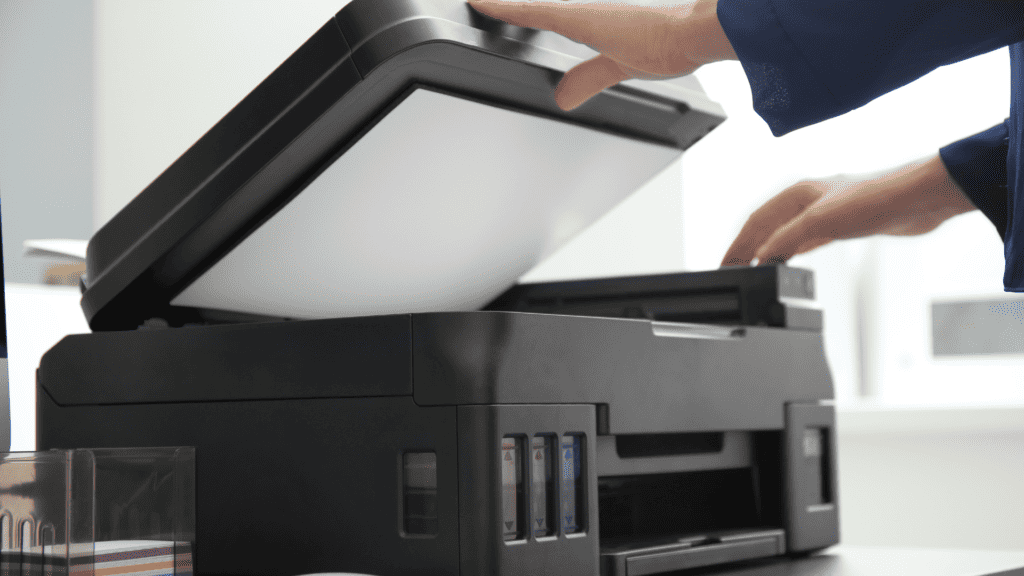Resources for N.A.P.S. Schools

Online Screening Platform
*** Special Pricing for N.A.P.S. Schools ***
Datasource Background Screening Services
(800) 431-8315
Support@datasourcecorp.com

Mark Your Calendar
March 15 - May 1, 2024 - Annual Verification Form
A Guide to Digitizing Students' Academic Records

Paper piles overflowing your office? Retrieving records turning into a treasure hunt? In today's digital age, clinging to physical student academic records is not only inefficient but also a burden on resources and accessibility. Embracing digital transformation is the key to streamlining record management, boosting efficiency, and reducing operating costs.
Why Digitize?
The benefits of digitizing student academic records are numerous:
• Enhanced Accessibility: Records become instantly accessible anywhere, anytime, on any device with proper authorization. No more chasing down files or requesting transcripts months in advance.
• Improved Security: Digital records are safeguarded from physical damage, loss, or unauthorized access. Data backups and encryption provide an extra layer of protection.
• Increased Efficiency: Administrative tasks like record retrieval, analysis, and reporting become significantly faster and more accurate. Data can be easily aggregated and filtered for insights.
• Decreased Vulnerability: Non-digitized school records are susceptible to damages from natural disasters, human mishandling, and vandalism.
• Reduced Costs: Less reliance on physical storage space, paper, and manual processes translates to significant cost savings in the long run.
• Environmental Impact: Digitization minimizes paper usage and carbon footprint, lessening the impact on the environment.
Taking the Leap:
Making the transition to a digital system requires careful planning and execution. Here are some key steps:
• Phased Implementation: Consider digitizing in phases, starting with the most recent or frequently accessed records. This minimizes disruption and allows for adjustments as needed.
• Hard Drive Storage and Cloud Storage: Large amounts of data can be stored locally and in the cloud. Security is the top priority (Please read the article on keeping your school’s student records safe).
• Scanner/Copier: Implement scanning of student records with an inexpensive all-in-one scanner with at least 300 dpi capabilities. Utilizing the .PDF format allows for cross-platform accessibility.

Beyond the Basics:
Once your system is in place, explore further digitalization opportunities:
• Saving and Retrieval: Carefully plan the archival system for your records. Of course, think of it as a file cabinet and create a folder for each student record using a label with “last name, first name”.
• Backup the Data: Be sure to implement a cloud backup if the records are stored on a local device (Please read the article on keeping your school’s student records safe).
Embracing the Future while Preserving the Past:
Digitizing student academic records is not just a technological upgrade; it's a strategic shift towards a more efficient, secure, and student-centered learning environment. By proactively embracing digital transformation, school administrators can ensure their school is well-equipped to navigate the demands of the 21st-century educational landscape. So, take the first step today and unlock the future of student record management in your school.
Remember: This is just a starting point. Be sure to customize your approach based on your school's specific needs and resources. With careful planning and a commitment to digital advancement, you can create a streamlined and secure system that benefits students, staff, and the entire school community.
Be sure to read the next article:

Keeping Your Student Records Safe

Fortressing Knowledge:
In an age where data is prized and vulnerability lurks online, safeguarding student information has become paramount. Schools hold a treasure trove of sensitive data – academic records, disciplinary files, health reports – entrusted to them by families. Protecting this information from unauthorized access, breaches, and misuse is an ethical and legal imperative. Here's a comprehensive guide to keeping students' academic records secure:
Understanding the Landscape:
• FERPA: The Family Educational Rights and Privacy Act (FERPA) sets the federal baseline for protecting student data. It defines what “education records” are, who has access, and when consent is required for disclosure. Familiarity with FERPA’s guidelines is crucial for schools.
• State and Local Laws: Alongside FERPA, many states have additional student privacy laws, often stricter in nature. Research and comply with applicable state and local regulations to ensure complete coverage.
• Third-Party Vendors: Many schools utilize third-party software and services for tasks like online learning or grading. Scrutinize data-sharing agreements with these vendors and ensure they align with student privacy policies.
Building Digital Defenses:
• Access Control: Limit access to student records to authorized personnel based on their “need to know.” Implement multi-factor authentication for sensitive systems and regularly review access privileges.
• Data Encryption: Encrypt student data both at rest (stored) and in transit (transmitted). This scrambles information, making it unreadable for unauthorized actors even if compromised.
• Secure Storage: Physical records should be securely stored in locked fireproof cabinets or specialized facilities. Electronically stored data should be housed in secure servers with regular backups with disaster recovery plans.
• Incident Response: Develop a clear plan for responding to data breaches, including notification procedures, containment measures, and remediation steps. Review this plan regularly with authorized staff.
Transparency and Education:
• Clear Policies: Develop and maintain clear, easy-to-understand policies on student data privacy. These policies should be readily available to parents, students, and staff.
• Regular Training: Train staff on student data privacy policies and procedures, including secure handling and reporting of potential breaches. Regularly update training to reflect changes in technology and regulations.
• Parental Involvement: Inform parents about their rights under FERPA and how their child’s data is accessed, used, and protected. Provide avenues for parents to review and request corrections to their children’s records.
Staying Vigilant:
• Regular Assessments: Conduct periodic risk assessments to identify potential vulnerabilities in data security practices. Adapt and update security measures based on these assessments.
• Monitoring and Logging: Monitor system activity for suspicious behavior and log access attempts to student records. Investigate any anomalies promptly and thoroughly.
• Open Communication: Encourage a culture of open communication among staff and students regarding data security concerns. Promote safe reporting mechanisms for potential breaches or suspicious activity.
Protecting student academic records is an ongoing commitment, not a one-time task. By adopting a comprehensive approach that combines legal compliance, robust security measures, and open communication, schools can create a safe haven for student data, fostering trust and learning within their stakeholder communities.
Additional Resources:
• U.S. Department of Education’s Student Privacy website: https://studentprivacy.ed.gov/
• National Center for Education Statistics’ FERPA resources: https://studentprivacy.ed.gov/faq/what-education-record
• American Association of School Administrators’ Data Privacy Toolkit: https://www.aasa.org/resources/student-child-privacy-center




